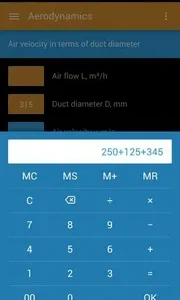Clearing goods from customs is one of the most important steps in international trade and logistics. Whether you are importing machinery, electronics, raw materials, or personal items, the customs clearance process determines how quickly your shipment can legally enter a country. Many new importers assume that customs procedures are confusing, time-consuming, and costly—but with the right knowledge and preparation, clearing from customs can be a smooth, efficient, and predictable process. This article explains what customs clearance means, how it works, the documents required, common challenges, and practical tips to avoid delays and reduce costs.
What Does “Clear from Customs” Mean?
clear from customs refers to the process of submitting required documents, paying applicable duties and taxes, and receiving approval from the customs authority to release imported or exported goods. Customs officials review the shipment to ensure compliance with national laws, safety standards, and trade regulations. Only after clearance can goods be transported to the final destination or delivered to the consignee.
In simple terms, customs clearance ensures that:
- The shipment follows all import and export rules.
- The importer pays the correct duties and taxes.
- Restricted or prohibited items are identified.
- The country’s trade laws and safety regulations are upheld.
How the Customs Clearance Process Works
Although the procedures may vary depending on the country and type of goods, the general customs clearance process follows four key stages:
- Document Submission
The process begins when the customs broker or importer submits all necessary documents. These typically include:
- Commercial invoice
- Packing list
- Bill of lading or air waybill
- Import license (if required)
- Certificate of origin
- Insurance documents
- HS codes for product classification
Customs authorities verify these documents to check if the goods match the information provided.
- Customs Assessment
Once documents are submitted, customs officers assess:
- HS code classification
- Duties and taxes applicable
- Compliance with import regulations
- Risk level of the shipment
Some shipments are flagged for detailed inspection if they contain restricted goods or if documentation is unclear.
- Payment of Duties & Taxes
Import duties, Value Added Tax (VAT), and other fees must be paid before clearance. The amount depends on:
- Product category
- Country of origin
- Declared value
- Trade agreements
Once payment is completed, customs issues a release order.
- Shipment Release
After approval, customs clears the shipment, allowing it to be moved out of the port or airport. The goods can then be delivered to the warehouse, retail store, or final destination.
Essential Documents for Faster Customs Clearance
Having complete and accurate documentation helps prevent delays. Here are the essential documents every importer should prepare:
✔ Commercial Invoice
Contains product details, quantity, value, and seller–buyer information.
✔ Packing List
Shows how items are packed and their weights/dimensions.
✔ Bill of Lading / Air Waybill
Serves as proof of shipment and ownership.
✔ HS Code Classification
Determines the duty and tax structure.
✔ Certificate of Origin
Required for trade agreements and tariff exemptions.
✔ Import License (If applicable)
Needed for regulated goods such as chemicals, electronics, food, or medical devices.
✔ Insurance Certificate
Covers shipment risks and is useful for customs valuation.
Submitting correct and complete documents is the most effective way to ensure fast customs clearance.
Common Challenges in Customs Clearance
Despite having documents ready, importers may still face issues. Here are some common challenges:
- Incorrect HS Code
Misclassification can lead to higher duties, fines, or shipment seizures. Always verify HS codes with experts.
- Undervaluation or Overvaluation
Declaring false values triggers customs inspections and delays.
- Missing or Incomplete Documents
Even minor errors on invoices or packing lists can hold a shipment.
- Restricted or Prohibited Goods
Some items require prior approval or special permits.
- Delayed Duty Payments
If duties and taxes are not paid on time, goods remain stuck at the port.
- Random Inspections
Customs may inspect shipments randomly, which can add processing time.
Why You Should Use a Professional Customs Broker
A customs broker is a licensed expert who handles the clearance process on your behalf. Hiring one can save time, reduce stress, and ensure compliance.
Benefits of Using a Customs Broker:
- Accurate documentation
- Correct HS code classification
- Faster processing
- Reduced risk of penalties
- Updated knowledge of customs rules
- Seamless coordination with authorities
Brokers are especially helpful for new importers or complex shipments.
Tips to Speed Up Customs Clearance
If you want your goods to clear from customs quickly, follow these practical tips:
✔ Prepare documents before shipment
Avoid last-minute errors by checking all paperwork in advance.
✔ Ensure accurate product classification
Use correct HS codes and provide detailed product descriptions.
✔ Maintain clear communication with your supplier
Ensure the invoice and packing list match the actual goods.
✔ Pay duties and taxes promptly
Delays in payment can hold your shipment for days.
✔ Work with experienced customs brokers
Experts can make the process hassle-free.
✔ Use digital tracking
Many countries now offer online customs portals to track shipment status.
Conclusion
Clearing from customs doesn’t have to be difficult. By understanding the process, preparing complete documentation, and working with experienced professionals, importers can ensure fast and efficient clearance for every shipment. Whether you are a business or an individual, proper planning and compliance with customs regulations will save you time, money, and unnecessary stress. With the right approach, customs clearance becomes a smooth part of your supply chain instead of a complicated obstacle.




